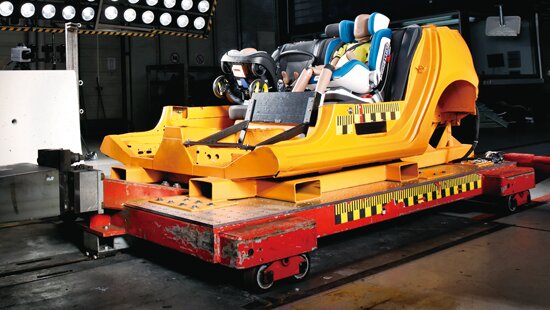At present, there is no mandatory requirement for child passenger to use car seat when travelling in the rear seat of private cars, making Hong Kong fall behind many advanced countries in child passenger protection.
Since 2010, the Consumer Council has been repeatedly recommending the Government to tighten the regulations for child passenger protection. Subsequently in 2013, the Government consulted the Legislative Councillors on the proposed legislative amendment. The Government is currently looking into the details of the proposal. The Council is urging the Government to expedite the legislative process for the benefit of child passenger’s safety. The Council also recommends parents to purchase and use appropriate car seats for their children when travelling in private cars.
Studies showed that child passenger using appropriate car seat could have reduced risks of injury by approximately 80% in the event of a collision. In fact, legislations in the UK, France, Germany, Japan and Singapore, etc. have all stipulated mandatory use of appropriate child car seats in private cars for enhanced protection for child passengers.
The Road Traffic (Safety Equipment) Regulations in Hong Kong, however, requires mandatory use of approved child car seat for children aged 2 years or below when travelling in front seat of private cars, but not compulsory for those travelling in the rear seat unless child car seat is installed, which is obviously insufficient.
The Council works in collaboration with the International Consumer Research & Testing (ICRT) to conduct tests of new models of child car seats every year. This year, 11 existing or impending new models in Hong Kong for the newborns up to children weighted below 36kg were tested. As more rigorous testing methods were adopted this year, findings revealed noticeable divergence in performance among test models in crash tests.
In this test, sample with a restrained dummy child were tested in a real car chassis to undergo simulated head-on and side impact tests. Test speed of the two tests was 74 km/h and 27 km/h, representing a hike in the impact on child dummy by 20% and 50% respectively. The child dummy was enhanced to be even more real and equipped with more sensors.
Most of the samples were found to perform well in frontal impact test. However, 1 sample that supported both rearward and forward facing installation performed poorly in frontal impact test and scored 2 points only when it was installed in forward facing position.
In safety design, most samples performed well in aspects such as seat belt design, adjustment for children of different sizes, and fit to vehicles and features of the sample like head support. One of the samples scored the top 5-point rating as it could be securely fitted to seats of different vehicle types.
A child car seat needs to be correctly installed to render optimal protection. Most of the manufacturers’ instructions and product labels were clearly written and easy to comprehend. Some even provided videos on their websites to demonstrate correct installation to avoid wrong fitting. However, there were 2 samples which could cause missing steps in installation should users are not following the instruction manual or labels closely enough.
Formaldehyde was not found in any samples tested, and only some samples were found with traces of PAHs, plasticisers, flame retardants or phenolic compounds. Experts opined that the potential risk exposure of a child or the environment is low for a mild presence of such hazardous substances. Before using the car seats, parents can clean up the parts that may be in direct contact with the child’s skin and make sure that the child would not put the safety belt paddings or other parts into the mouth.
When choosing a car seat, consumers should take note of the following:
- Pick a suitable model according to weight and height of a child. Age indicated from manufacturers shall be treated as reference only.
- Follow the user instructions when installing the car seat for optimal performance.
- Some child car seats are suitable for certain vehicle types only. Consult the retailer or distributor of the product before purchase.
The Consumer Council reserves all its right (including copyright) in respect of CHOICE magazine and Online CHOICE (https://echoice.consumer.org.hk/).



